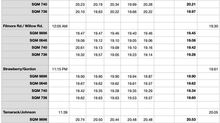Meet the Stars of New Year's Eve
- Chuck Bueter
- Dec 16, 2023
- 2 min read
Updated: Dec 18, 2023
Using a paper plate you can predict where the stars will be for any date and time. In the Platisphere Activity, you make a simple device set to January 1 at midnight, from which you can find the north circumpolar stars year-round. Make a stack and give them to curious friends and strangers--you may be the star of the night!

To celebrate the new orbit around the sun, I've reached back into the archives to share instructions to make and use functional Platispheres. It's an inexpensive activity for a group that requires only paper plates, paper fasteners, and a drill and bits. The original Platisphere Activity first appeared in the GLPA Proceedings, 2000, pp. 67-68, and the original video gives further instructions and examples.

Your Platisphere starts with a starfield set for the opening of the new year--January 1 at midnight--with the Big Dipper standing on its handle. It's close enough to the New Year's Eve celebration, so when you go out with a group to watch the ball drop, take along your paper plate device. Later in the year you'll see the Big Dipper is hard to find because it's handle is so low to the horizon and may be obscured by buildings or trees.
Try predicting where the circumpolar stars will be on some important date on your calendar. Or show where it was for some marquee event. New Year's Eve is just a start.
Other Perspectives
The stories of the constellations and asterisms, such the Big Dipper, are commonly based on Western-centric history and practices. However, the Platisphere can be used to explore other ways of looking at the night sky and the sky's relationship to the land.
For example, in the Green Dreamer podcast Hilding Neilson: Astro-colonialism and honoring the stories of our night skies, Neilson shares an indigenous perspective of the Big Dipper stars being a bear pursued by birds in a Mi'kmaw storytelling. The legend is always told around the same time--early in the morning before dawn--but told throughout the year. As the circumpolar stars change position through the months, the story evolves.
With the Platisphere you can set your sky for a spring morning when the story of Muin the bear begins. As Muin rises from hibernation, it is followed by a group of birds that will hunt it. Neilson notes, "First comes Chickadee with a pot. And the funny part of that is, if you look at the Chickadee in the night sky, it's two stars, Chickadee and his pot." Indeed, the binary star Mizar has a faint companion star Alcor nearby. The story continues through the seasons, which you can track with your Platisphere.
.








































